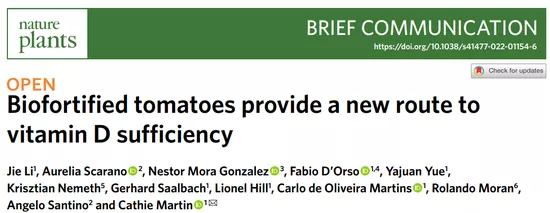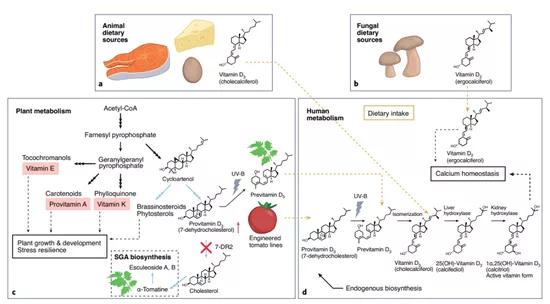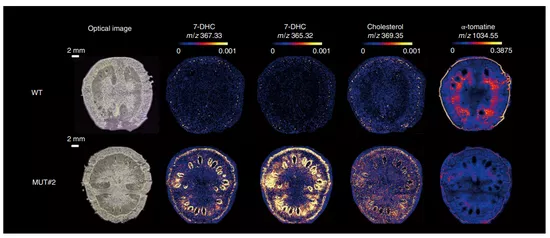We should be familiar with vitamin D. we may have heard that calcium supplements need to be eaten together with vitamin D. the latter can indeed promote the absorption and utilization of calcium. However, just because we listened more doesn't mean we really added enough According to a review of vitamin D deficiency in the New England Journal of medicine, the number of people who lack or lack vitamin D intake worldwide may be as high as about 1 billion
A new study in nature plants also describes this surprising data in the background introduction.

Of course, the human body has a special function, which can accelerate the biochemical metabolic pathway in the body by basking in the sun, so that the UV-B in the ultraviolet ray can convert 7-dehydrocholesterol (7-DHC) into vitamin D. However, this method is not cost-effective. After all, too long UV exposure is closely related to the increased incidence rate of skin cancer.
It's best if you can eat something to supplement, especially those fruits and vegetables that can be eaten easily. This can complete the task of vitamin D supplementation without sweating or increasing the risk of cancer.

No, recent new research has brought new tomatoes that can provide vitamin D. In fact, plants themselves do have the potential to provide vitamin D. for example, the green leaves and immature fruits of vegetables and fruits plants that are usually planted do contain 7-DHC, and they almost become vitamin D.
However, as the fruit matures, 7-DHC does not change in the expected direction, but becomes cholesterol, and it is the 7-DHC reductase in plants that contributes to this change. With the help of crispr-cas9 gene editing technology, the new research managed to knock out the gene encoding this reductase in tomato.
Just such a small move has greatly improved the level of 7-DHC in tomato, and a large amount of 7-DHC has been accumulated in tomato fruits and leaves. It is estimated that a medium-sized modified tomato can accumulate about 10 µ g of 7-DHC.
These 7-DHC can be converted to vitamin D by irradiation UV-B treatment. The researchers speculate that the amount of 7-DHC contained in the modified tomatoes in the study, when they are converted into vitamin D, is equivalent to the level of vitamin D in two medium-sized eggs or 28 grams of tuna.

In other words, in the future, we hope to use a few tomatoes to meet the needs of vitamin D supplementation.
In addition to tomatoes, the method studied can also be used in more Solanaceae plants, such as potatoes, which are easier to use as a staple food.
From the current research observation, the growth, development and yield of the modified tomato are the same as those of the normal tomato. At least the vitamin D production process of tomatoes is not a problem, but the research also points out that it is necessary to further investigate the vitamin D stability of these fruits and vegetables in long-term storage. Scientists must ensure that the vitamin D content of these fruits and vegetables meets a certain level when they are sent to the table.
Another problem is that the metabolic process of plants has been artificially changed in the research, including glycoside alkaloid pathway, which plays a great role in the anti biological stress of plants. To achieve mass production, these tomatoes must go out of the laboratory. Whether they can survive normally in the wild is an important issue to be considered in the future.
After these two problems are thoroughly studied, we may no longer need to bask in the sun and spend a lot of money on supplements to supplement vitamin D.